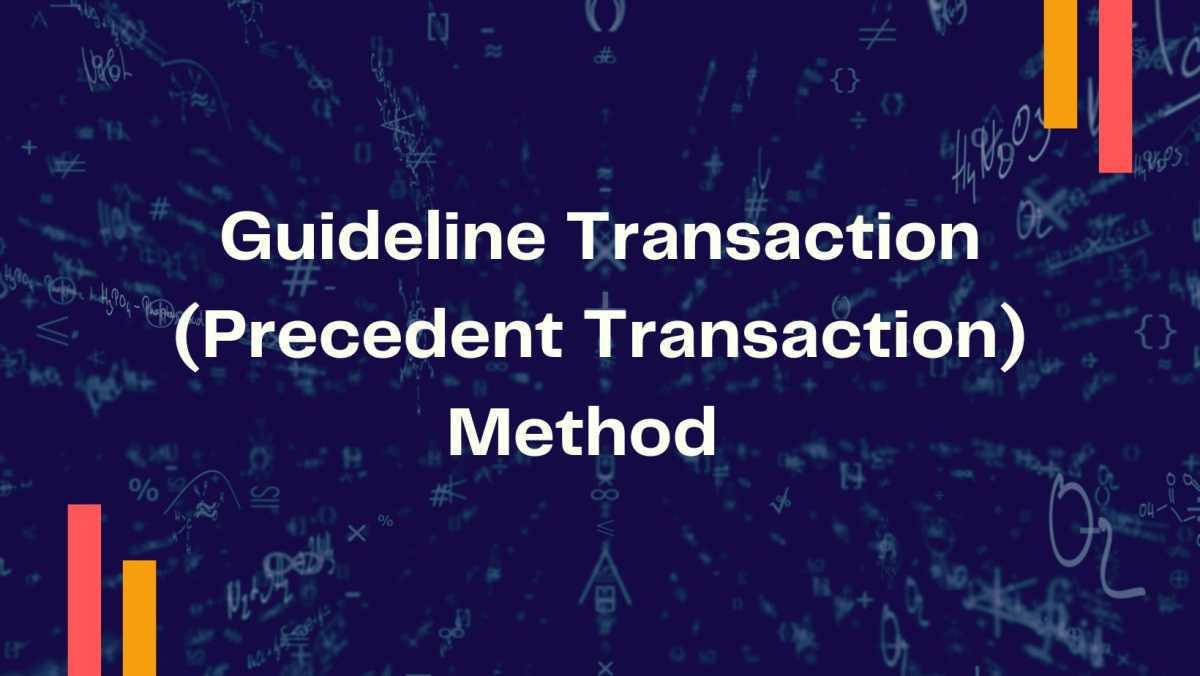The Guideline Transaction Method, also known as the Precedent Transaction Method, is a market-based valuation approach that estimates the value of a company based on previously completed mergers and acquisitions (M&A) transactions involving comparable businesses.
Procedures to Perform the Guideline Transaction (Precedent Transaction) Method
Step 1: Define the Scope of the Valuation
- Determine whether you are valuing a minority interest (non-controlling) or a majority interest (controlling) stake.
- Decide on the time frame for selecting precedent transactions (e.g., last 3–5 years).
- Identify industry and market trends that could impact transaction comparability.
Step 2: Identify Comparable Transactions
- Use financial databases such as Bloomberg, or public filings (SEC, SEDAR).
- Look for transactions involving:
- Same industry and business model
- Similar company size (revenue, EBITDA, assets)
- Geographic proximity (if relevant)
- Similar market conditions (e.g., pre/post financial crisis)
- Exclude outliers (transactions with extreme valuations due to special circumstances).
Step 3: Collect Transaction Data
For each precedent transaction, gather:
- Transaction Value (TV):
- If full acquisition: Purchase Price / Enterprise Value (EV)
- If partial acquisition: Implied EV based on acquired stake
- Financial Metrics:
- Revenue
- EBITDA (Earnings Before Interest, Taxes, Depreciation, and Amortization)
- Net Income (if available)
- Multiples Derived from Transaction:
- EV/Revenue
- EV/EBITDA
- Price-to-Earnings (P/E) ratio (for equity-based transactions)
✅ Example Data from Comparable Transactions
| Company | EV ($M) | Revenue ($M) | EV/Revenue | EBITDA ($M) | EV/EBITDA |
|---|---|---|---|---|---|
| A | 500 | 200 | 2.5x | 50 | 10.0x |
| B | 700 | 280 | 2.5x | 70 | 10.0x |
| C | 450 | 180 | 2.5x | 45 | 10.0x |
| Median | - | - | 2.5x | - | 10.0x |
Step 4: Apply the Multiples to the Target Company
- Select the appropriate multiple (median or average from comparable transactions).
- Apply to the target company’s financials:
Step 5: Adjust for Deal-Specific Considerations
- Control Premium: If valuing a controlling interest, apply a premium
- Synergy Adjustments: Consider expected cost savings or revenue enhancements in M&A.
- Market Conditions: Adjust for inflation, sector growth, or macroeconomic changes.
- Differences in Business Model: If target has different risk profile, growth rate, or margins, adjust accordingly.
Step 6: Convert Enterprise Value to Equity Value (if needed)
If valuing equity instead of the entire company:
Where:
- Net Debt = Total Debt – Cash & Equivalents.
Step 7: Validate and Compare Results
- Compare results with Discounted Cash Flow (DCF) or Guideline Public Company Method.
- Conduct sensitivity analysis by varying the selected multiples.
- If there’s a large discrepancy between transaction multiples and public market multiples, investigate potential reasons.
Key Advantages of the Guideline Transaction Method
✔ Reflects real-world market transactions.
✔ Useful for private companies where public market data is unavailable.
✔ Captures control premiums and synergies in M&A deals.


